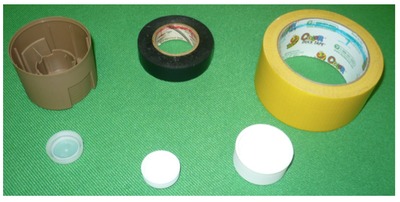Task
Think about a cylindrical (or cylinder-like) object, such as a bottle lid or a roll of tape. Some possible objects are shown in the picture below. Suppose you were to toss one of these objects into the air and observe its landing position once it reaches the floor.

- For your object, what are the possible outcomes of this experiment?
- Make a guess – what are the probabilities of each of the possible outcomes?
- Toss the object into the air and record the outcome. Repeat this process 25 to 30 times.
- Determine the experimental probability of each outcome. How does this experimental probability compare to your guess from part b? Based on this information, would you like to change your guess?
- Repeat this activity with a different cylindrical (or cylinder-like) object that you think has a greater probability of landing on its side than your first object.
IM Commentary
The purpose of this task is to provide students with the opportunity to determine experimental probabilities by collecting data. The cylindrical objects used in this task typically have three different resting positions, but not all of these may be equally likely, and some may be extremely unlikely or impossible when the object is tossed. Furthermore, obtaining the probabilities of the outcomes is perhaps only possible through the use of long-run relative frequencies. This is because these cylinders do not have the same types of symmetries as objects that are often used as dice, such as cubes or tetrahedrons, where each outcome is equally likely.
Notes on implementing this task:
- The teacher may use a variety of different objects, or several identical objects.
- I colored the inside of the roll of tape closer to one side to differentiate “stripe up” from a “stripe down.” Both tape rolls are shown in “stripe up” position.
- If the object strikes something (such as a book, desk, or student) before coming to rest, do not count that toss.
For more information on this topic, please see the following article: Jones, D. L. (2009, February). Examining cylindrical dice. Mathematics Teacher, 102(6), 420-424.


